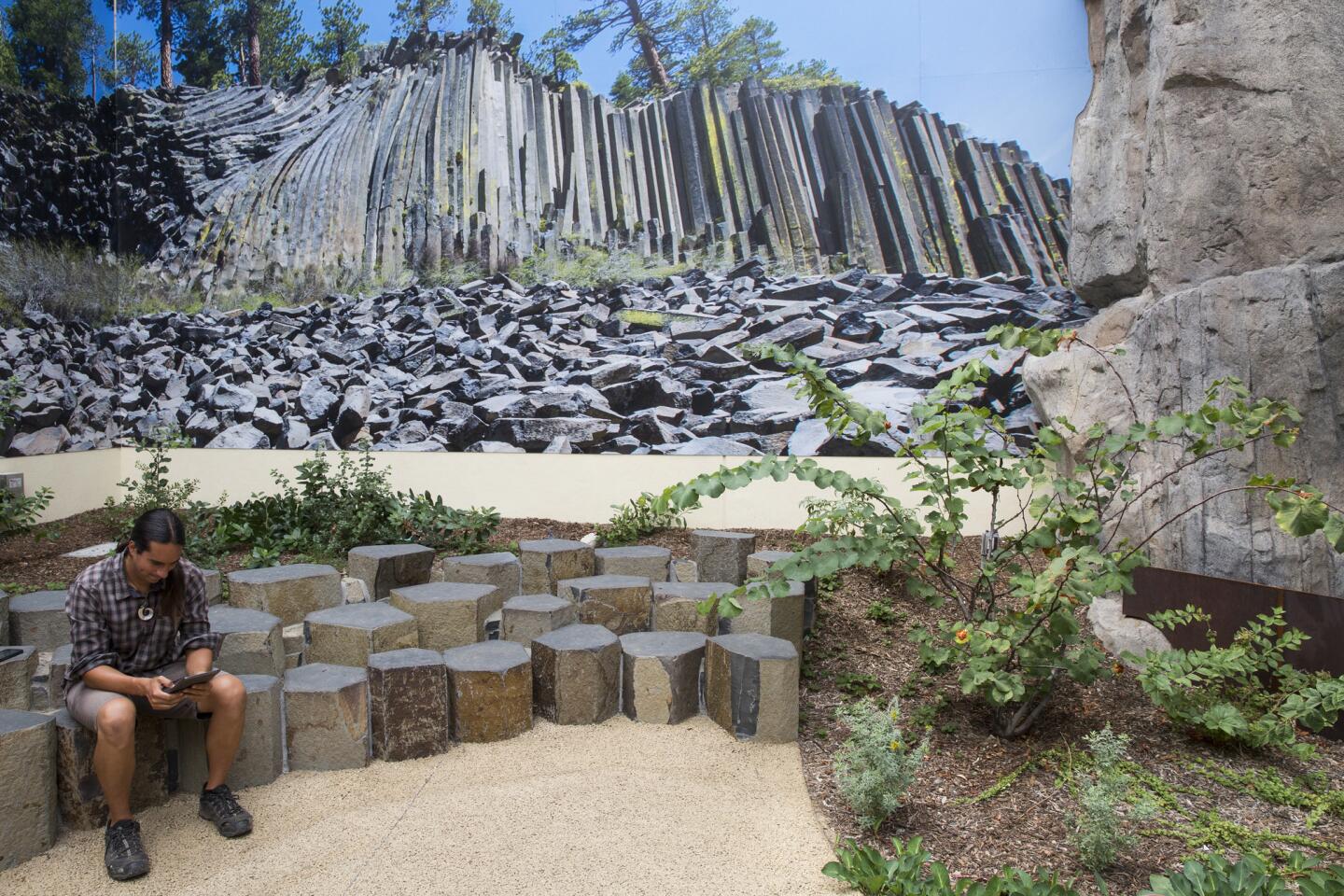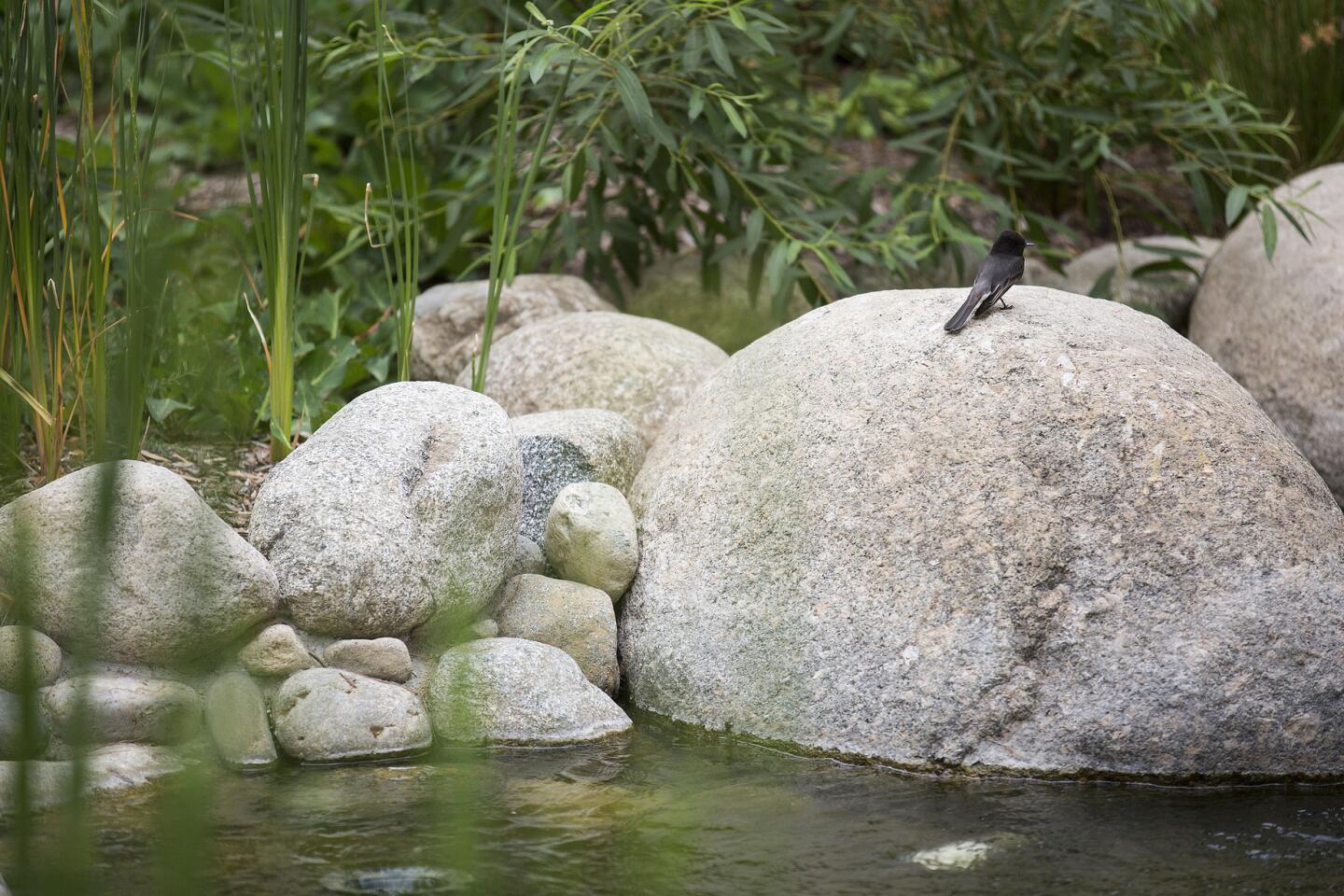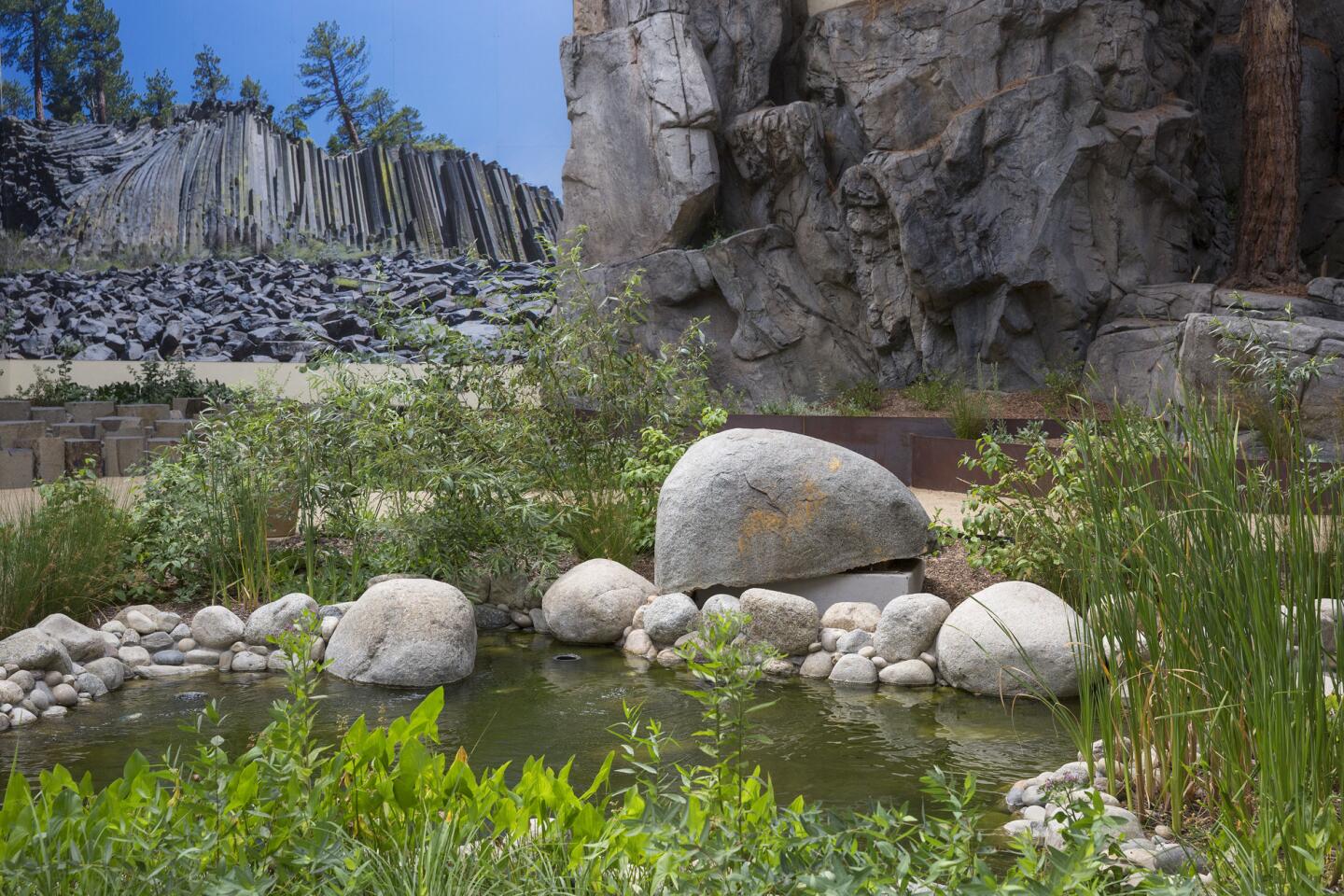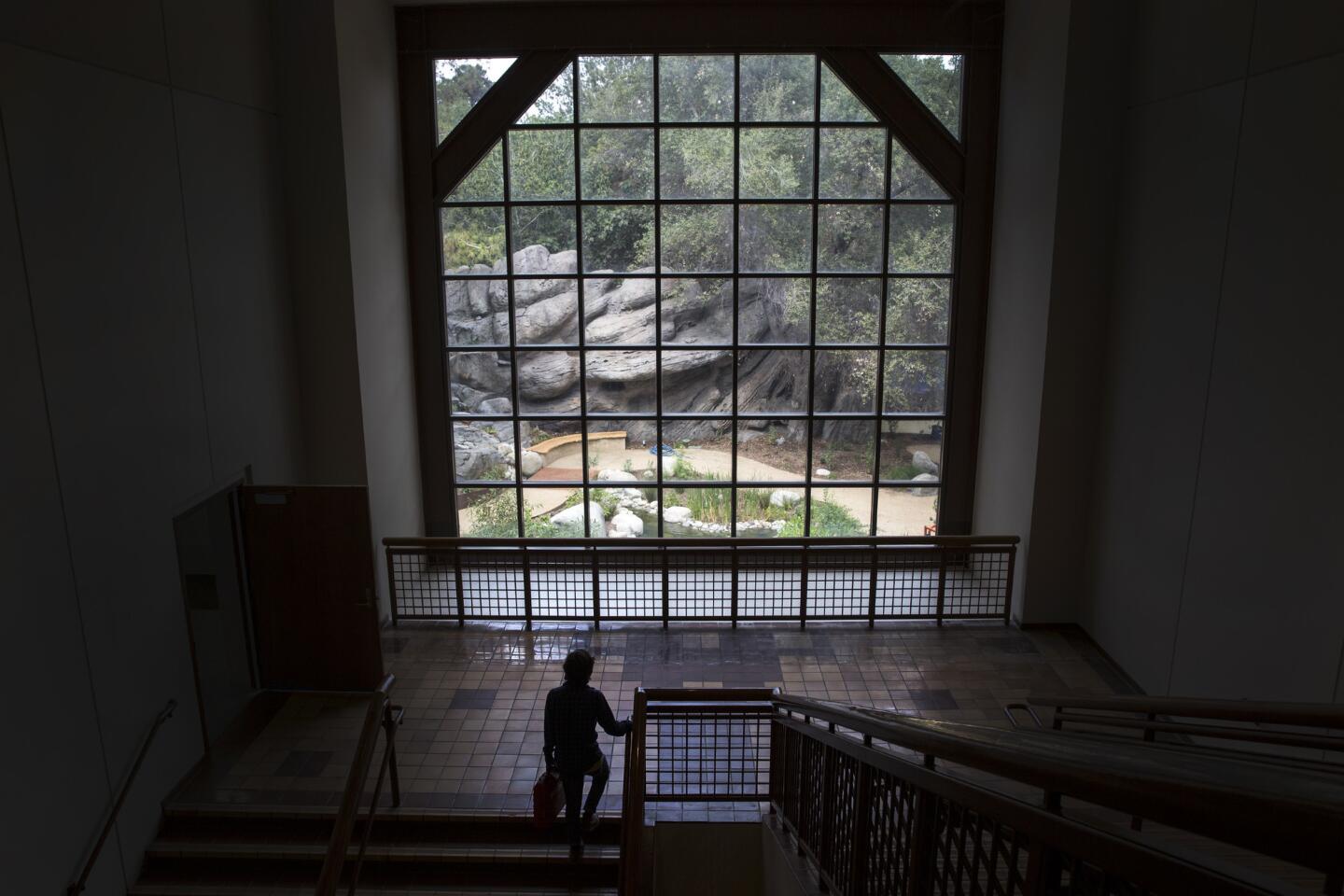A new garden at the Autry Museum offers a glimpse of the past and the future
- Share via
All the glass cases and explanatory texts in museums can impart only so much. There is nothing more satisfying than to actually see, smell and feel the plants that have shaped the story of California, and the state’s Native Americans in particular.
The Autry Museum of the American West has opened “California Continued,” an ambitious effort that includes two exhibitions, a multimedia experience and oral history interviews taken by KCETLink. Taken together, these illuminate the state’s unfolding history and the role native plants play in it.
With the museum’s recent renovations comes the opening of a 7,000-square-foot ethnobotanical teaching garden that highlights some 60 California plant species and the uses Native American communities discovered for them.
Erik Greenberg, director of education and visitor engagement, hopes the garden will help breathe life into the story unfolding within the galleries. “We want to introduce the possibility that the California Indian’s relationship to the land is something we can all emulate. This is information for the 21st century.”
Designed by Matthew Kennedy, a member of the Ponca tribe of Nebraska and a principal of Costello Kennedy Landscape Architecture in Marin County, the garden is the California landscape writ small. As visitors enter, they are greeted with the sound of water falling from a rocky formation, past elderberries and pine toward a bubbling pond -- a wetland, actually -- that leeches water into the soil to be filtered and returned to the waterfall. The pond is surrounded by cattails (used for breads and house thatching), marsh fleabane (used to relieve cramping) and rushes (employed in basket weaving), among others.
Some of California’s microclimates -- from San Diego up to the Central Valley and the edge of the Bay Area are represented. On the left, the shadier side of the garden offers currants, ferns and dogbane normally found in the High Sierras. On the corner, where the afternoon sun shines, the landscape mimics that of Palm Springs and the Colorado River basin with mesquite trees and agave.

Each plant was intentionally chosen, says Kennedy, who with the help of Native American elders, authors, ethnobotanical professors and museum expertswas able to whittle down the garden’s final palette. The choice of plants was also influenced by the content of two new exhibitions at the museum: “Human Nature,” a long-term exhibit that addresses how traditional Native American ecological knowledge is even more relevant today; and “The Life and Work of Mabel McKay,” which highlights the legacy of the Pomo basketweaver and healer.
Take the California native rose, for example. Its smaller buds may be less attractive than the more fulsome ones of English roses, but its petals are loaded with vitamin C. “If you take Emergen-C or something similar, the California rose has medicinal uses that are a natural substitute to the powdered packets,” says the garden’s caretaker, Nicholas Hummingbird, who is Cahuilla and Apache.
Digital tablets borrowed from the museum, signs in the garden and interactive stations help visitors gain an appreciation for each plant in the garden. (Future plans include demonstration areas, such as an acorn grinding station that will be located next to an oak tree, so guests can get a sense for traditional knowledge.) On an overlook above the garden, a listening station features videos of California Indians recounting the roles these plants play in their communities and lives.
Despite the museum setting, Greenberg says the exhibit is acutely relevant to today’s audiences.
If you take Emergen-C or something similar, the California rose has medicinal uses that are a natural substitute to the powdered packets
— Nicholas Hummingbird
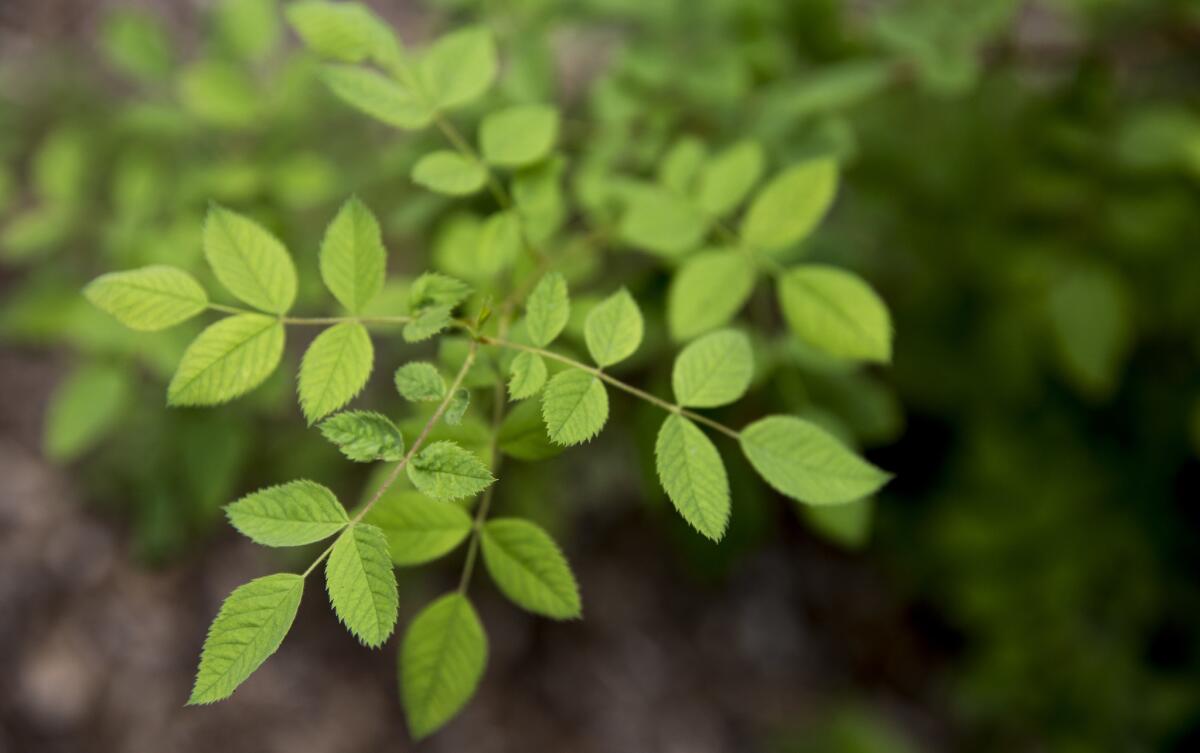
“There’s a chia drink on every menu these days, but chia is something that has been used by some of the Southern California tribes for thousands of years,” Kennedy says.
By learning more about the native plants that grow in California, the museum hopes to give visitors a keener sense of the delicate relationship between man and nature, as well as a glimpse of the complex histories each root, leaf and bud represent. Hummingbird says, “I hope visitors get a sense of what California truly is — not just the artificial stuff like Hollywood or palm trees — but its immense diversity, beauty. I hope they also find out about the people who have been here — who are still here — and their story.”
The Autry Museum in Griffith Park, 4700 Western Heritage Way, Los Angeles. Open 10 a.m. to 4 p.m. Tuesdays through Fridays and 10 a.m. to 5 p.m. Saturdays and Sundays. Admission is up to $10 for adults; children 3 and under are free. theautry.org
ALSO
A drought-tolerant English garden? Toluca Lake makeover manages to keep things green
This drought-friendly yard is a tropical oasis — in the middle of Burbank
Photos: Drought-tolerant plants that will look great in your garden


